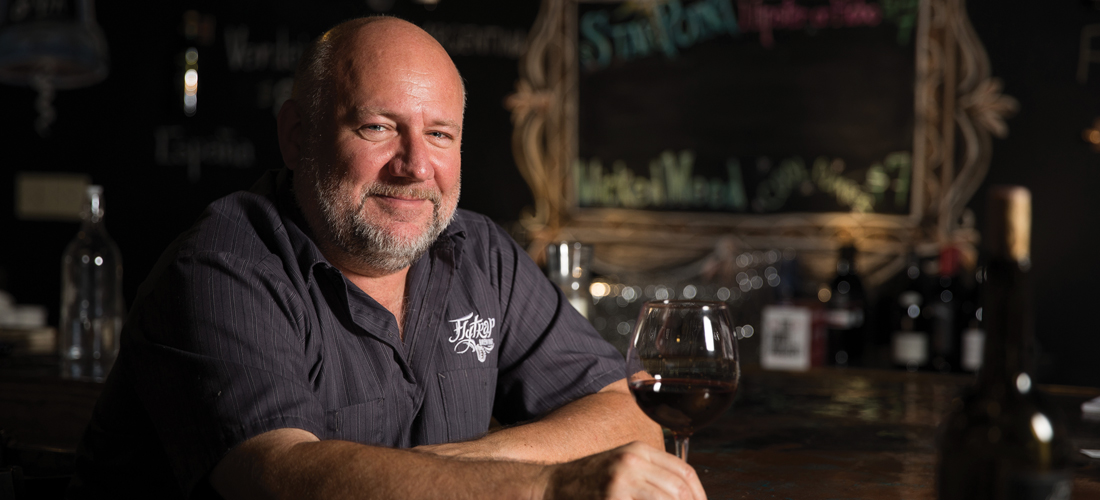Let There Be Lights
And lo, it was very good. Until it wasn’t
By Rebecca Lanning
IN THE BEGINNING, Dino erected De Laurentiis Studios. For lo, filmmaking was a bust in Hollywood, and producers sought cheaper locations where to maketh their movies, and so it was, upon the sandy loam by the Wilmington airport, that Dino’s vision emerged. And it was good.
WHEN DINO COMMANDED, “Prepare ye the way,” writers wrote scripts, and carpenters constructed sets, and wardrobe folks sewed ape suits, and a makeup artist crafted a prosthetic ear out of silicone and bits of David Lynch’s very own hair. And it was good.
AND WHEN THE DIRECTOR SHOUTETH, “Let there be Lights, Camera, Action,” the gaffer set a 5K with a double in it, and the operator switched heads while the dolly grip laid track, and the actress hit her mark — a strip of blue paper tape on the dusty stage floor. And behold! Major motion pictures were born: Crimes of the Heart, Blue Velvet, King Kong Lives. There was much rejoicing in the land and on the camera truck. And it was good.
VERILY, local youth fresh out of college began earning $300 a week picking up James Earl Jones from his hotel, arranging cans of soda on the craft service table, and telling everyone to be quiet on the set. Lo, the venerable Andy Griffith returneth to his home state to playeth the role of a hot dog-loving lawyer. And no one could believe this sleepy town, known mostly to surfers and boaters and marine biology majors, now shineth as a beacon of quality film and television productions. And it was ridiculously good.
BEHOLD! The promise of work spread fast throughout the land, and crew members flocketh to the Tar Heel State from hither and yon: New York, California, Michigan, Ohio, Burgaw. They laced up their Timberlands and turned on their Walkies and found great satisfaction in their toilsome labor. And one night when the first assistant director called wrap, Shirley MacLaine climbed aboard the camera truck and taught everyone how to make the perfect martini. And it was, like, amazing.
IN THE FULLNESS OF TIME, teen drama became the craze, and Dawson’s Creek was born, and the show liveth and reigneth in the Port City for six seasons. On Monday mornings at dawn, the crew would park in the crew lot and ride the shuttle to the location and work 14, 15, 18 hours at a stretch, schlepping gear through the Greenfield gator swamp, breathing in great clouds of dust at the Ideal Cement Factory. Verily, the call time would shift later each day, so by Fridays, the crew would stumble in to work at 4 p.m., eat lunch at midnight, get home on Saturday mornings in time to catch Sponge Bob with the kids, because, of course, loin fruit were in the picture by now, and lo, spouses who often felt like single parents — always the one on carpool duty, homework duty, dinner duty, always the one to take the kids trick-or-treating, celebrating milestone birthdays alone, and one day slogging to the gym to squeeze in some me-time and spotting Katie Holmes on the next treadmill, clocking in a 10-minute mile, ponytail swinging. She was 20 years old; the world was her oyster. And it was good. I mean, it was fine, really. It was OK, because, you know, the bills were getting paid, and everyone had health insurance, which is really important. I mean, you gotta have health insurance.
AND IT CAME TO PASS that the wheels on this gravy train started to wobble. Though work could be foundeth here and there, on One Tree Hill and Bolden, fewer projects came to town. Despite a dedicated workforce — folks who’d built their lives here, bought homes and raised families not far from the studios (now called EUE/Screen Gems, by the way) — the state’s tax incentives were no longer as alluring. Production companies could maketh their projects for less down in Atlanta. Things were just peachy down there. Studios on every corner. Big stuff poppin’.
SEEING WHAT WAS TO COME, some crew members cut their losses. Everyone’s favorite clapper-loader became a behavioral therapist, and a grip started selling medical equipment, and another grip began building Adirondack chairs, and an operator got his M.F.A. and became a film studies professor at the local university, which was totally on the map now.
IT ALSO CAME TO PASS that some crew members could not find alternative work or didn’t know what else to do; this was all they’d ever done. They had mortgages and college loans and medical bills to pay, because, you know, insurance coverage wasn’t what it used to be. Some uprooteth and moveth to Atlanta or commuteth to Atlanta, paying for their own airfare, food, apartments, Prozac. Others remained in the Port City, taking the work that trickled in, for there would always be someone younger waiting in the wings, eager to clap the sticks or set the dimmer board or bring a croissant to the famous director who showed up to the set 45 minutes late, every day, in his bathrobe. And though the money was not as good, it wasn’t just about the money.
I mean, IN THE BEGINNING, it was about the money, the money and the glamour and of course the Coronas on the camera truck, but it had come to be about something else too. Camaraderie. Cooking chicken paprikash with Vilmos Zsigmond. Making something out of nothing. Venturing into the dark and formless void and creating a whole new world. b
Rebecca Lanning lived in Wilmington from 1994 to 2008 and now makes her home in Chapel Hill with her husband, a cameraman. Her work has appeared in many publications, including Salon, The Washington Post and The New York Times.


